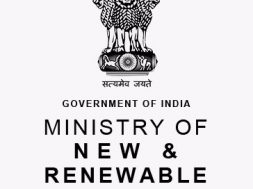
How energy as a service is enabling investments in renewables – EQ Mag Pro
The effective utilisation of the EAAS concept demands intensive digitalisation. Consumers will have to switch to smart electric devices that allow sharing real-time power consumption data.
Power sector is all set to undergo a huge change. Currently, the energy sector works on a centralised model. Discoms produce power at a big plant, and deliver electricity directly to consumers through a complex transmission system. Therefore, power supply becomes a fixed cost with little autonomy for consumers in price fluctuations, or supply quality.
Consumers are now beginning to tap into renewable and cleaner sources of energy which allow them to generate and consume electricity at the same time. This allows consumers to bank on more diverse choices in order to save environmental, and economic costs.
In future, power consumers will not look for energy sellers, but will look for personalised services, technology experts, and data analysts to understand how they achieve desired results with investments in cleaner sources of energy. This is where ‘Energy as a Service’ (EAAS) becomes relevant.
EAAS involves a pool of highly-synchronised smart assets that are interconnected to provide a service/s. In an EAAS platform, a digital layer is employed that co-ordinates and distributes both energy and information in real-time. This allows the EAAS partner of a consumer to enhance energy efficiency by enabling trade of interactive products and services.
The growth of EAAS is encouraged by a global shift towards renewables, and less reliance on a single asset of power generation. The traditional power sector could function on the basis of a single power supply source, but with the growing focus on renewables, the market is looking to explore distributed energy resources system. Focus on enabling a distributed energy system is demanding innovative business solutions, which relies on mobilisation of power consumption data through tech technologies such as digitalisation, smart metring, and Internet of Things (IOT).
Today, many consumers often fail to understand their energy consumption patterns, and how they should invest in renewables to achieve desired results. This explains their failure to tap into the inherent advantages of adopting renewable energy despite its benefits. EAAS thus enables use of energy expertise to create more informed consumers.
Energy-related service providers can help consumers marshal their energy resources in a better way. Renewable sources such as solar, wind, hydro, biomass, waste-to-energy, fuel cells, and geothermal are smaller, modular, and more amenable to integration, and flexibility.
However, one big reason why renewables are not yet taking over the power market is the issue of load variability, and the potential for grid instability due to uncertainty about existence and duration of favourable weather conditions for power generation. Yet, advancements in stationary energy storage allow storing excess renewable energy, and releasing electricity when needed.
Digitalisation of the power sector is encouraging energy-related services. Energy experts can study energy consumption data to decide what kind of services should be offered for reducing electricity bills. They can also decide the pool of distributed renewable generation technologies that can be used to supply power to a consumer who is ready to shift to self-consumption.
EAAS is unlocking the benefits attached to adoption of renewable energy sources. It can also control the demand side of the power sector. The use of data analysis and automation will allow optimisation of power consumption with targeted load shedding.
The effective utilisation of the EAAS concept, however, demands intensive digitalisation. Consumers will have to switch to smart electric devices that allow sharing real-time power consumption data. Use of real-time information, and data analysis enable automation and other energy-related services.
Also, electricity usage data analysis is of no use unless the energy service providers can manage future electricity consumption. This is why time-of-use tariffs are necessary that allow consumers to shift some of their energy consumption to the non-peak hours when tariffs are low. On the other hand, during peak hours, consumers can shift to self-consumption, or distributed storage systems.
Finally, an EAAS platform will need the trust of distribution system operators that transfer energy from the source of generation to the end consumer. Traditionally, the distribution system operators respond to changing power demand, by reinforcing the power infrastructure. However, with EAAS platforms wasteful expenditure can be avoided if the conventional practice of network reinforcement is substituted by meeting peak demand through stored energy.
While the power sector is on verge of a transformation, EAAS is a necessary concept that is enabling consumers to embrace pocket-friendly, and environmentally-appropriate power consumption practices.
















